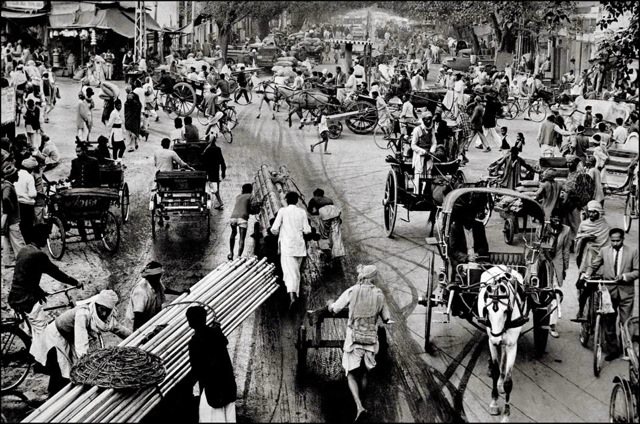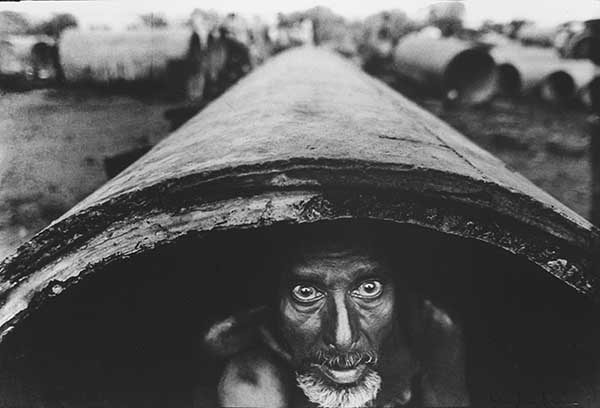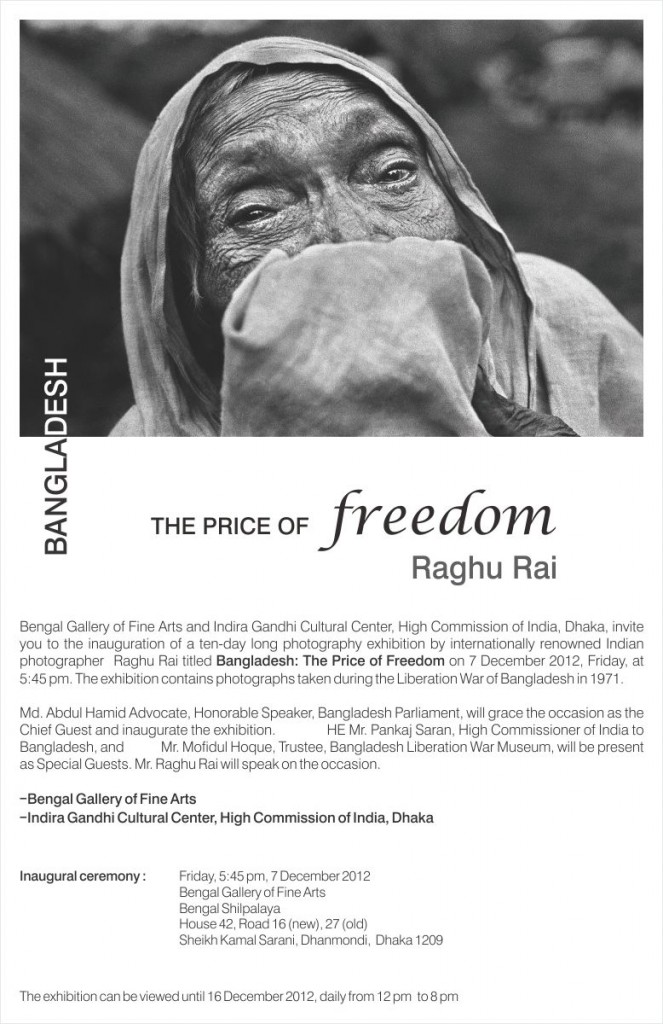
New Art Exchange and Aicon Gallery present
Raghu Rai’s Invocation to India
Curated by Saleem Arif Quadri MBE
Exhibition dates: 29 January – 30 April 2011
Private View: Friday 28 January, 6 – 9pm

Also taking place on the night: In Conversation with Niru Ratnam and Saleem Arif Quadri, 8pm
Rai?s work proclaims the rich diversity of contemporary India, with its juxtapositions of ancient and modern, where the people are the landscape. He photographs an India teeming with colour, history, beauty and brilliance whilst uncovering a continent’s domestic rituals with these striking images of Indian street life, festivals and the changing seasons.
“Over the centuries, so much has melded into India that it’s not really one country, and it’s not one culture. It is crowded with crosscurrents of many religions, beliefs, cultures and their practices that may appear incongruous. But India keeps alive the inner spirit of her own civilization with all its contradictions. Here, several centuries have learnt to live side by side at the same time. And a good photograph is a lasting witness to that, as photography is a history of our times: being a multi-lingual, multi- cultured and multi- religious society, the images must speak these complexities through a multi-layered experience.” – Raghu Rai
Rai, who was born in present-day Pakistani in 1942, came to India during Partition and has been witness to some of the most significant events in his country’s recent history. He was one of the first photographers on the scene after the 1984 Bhopal industrial disaster and has produced acclaimed documentary series on Mother Teresa, the Dalai Lama and the late Indian Prime Minister Indira Gandhi.
In 1977 Henri Cartier-Bresson saw his work at an exhibition in Paris, and recommended him to become a member of Magnum Photo Agency. Since then Rai has taken India as his canvas and produced works that he simply describes as slicing out spaces and moments in front of him. Rai has taken the documentary form associated with Cartier-Bresson and the Magnum tradition and pushed it in a way that responds to the specificities of India. He captures the ways in which the past co-exists with the present in India, and on a more subtle level, the visual rhymes and congruities between the different components in his works. His works attest to a multi-layered reality, where people, objects, animals and buildings jostle with each other, where people’s own personal space is overlaid and invaded by each other’s space.
Other major books include projects on the Taj Mahal, Tibet, Sikhs, Dreams of India, Tibet and his recent book on Indian Musicians (2010). A regular contributor to a huge range of international journals and British broadsheets, from ’90 to ’97 Rai judged the World Press Photo Awards.
With nearly 50 years of excellence and an extraordinary contribution to world photography and Indian photography in particular, in honour of his extensive photographic oeuvre and recognition of his commitment to excellence, in 1971 Rai was awarded one of India’s highest civilian accolades – the Padma Shri.
As part of Format International Photography Festival 2011
Raghu Rai has taught at Pathshala and has been a featured artist at Chobi Mela.
Raghu’s exhibition at Drik’s 20th anniversary
 Ms. Sheikh Hasina, Honorable Prime Minister
Ms. Sheikh Hasina, Honorable Prime Minister













 Shahidul Alam, ‘Ilish fishing’. Image from book. ? Shahidul Alam.
Shahidul Alam, ‘Ilish fishing’. Image from book. ? Shahidul Alam.
